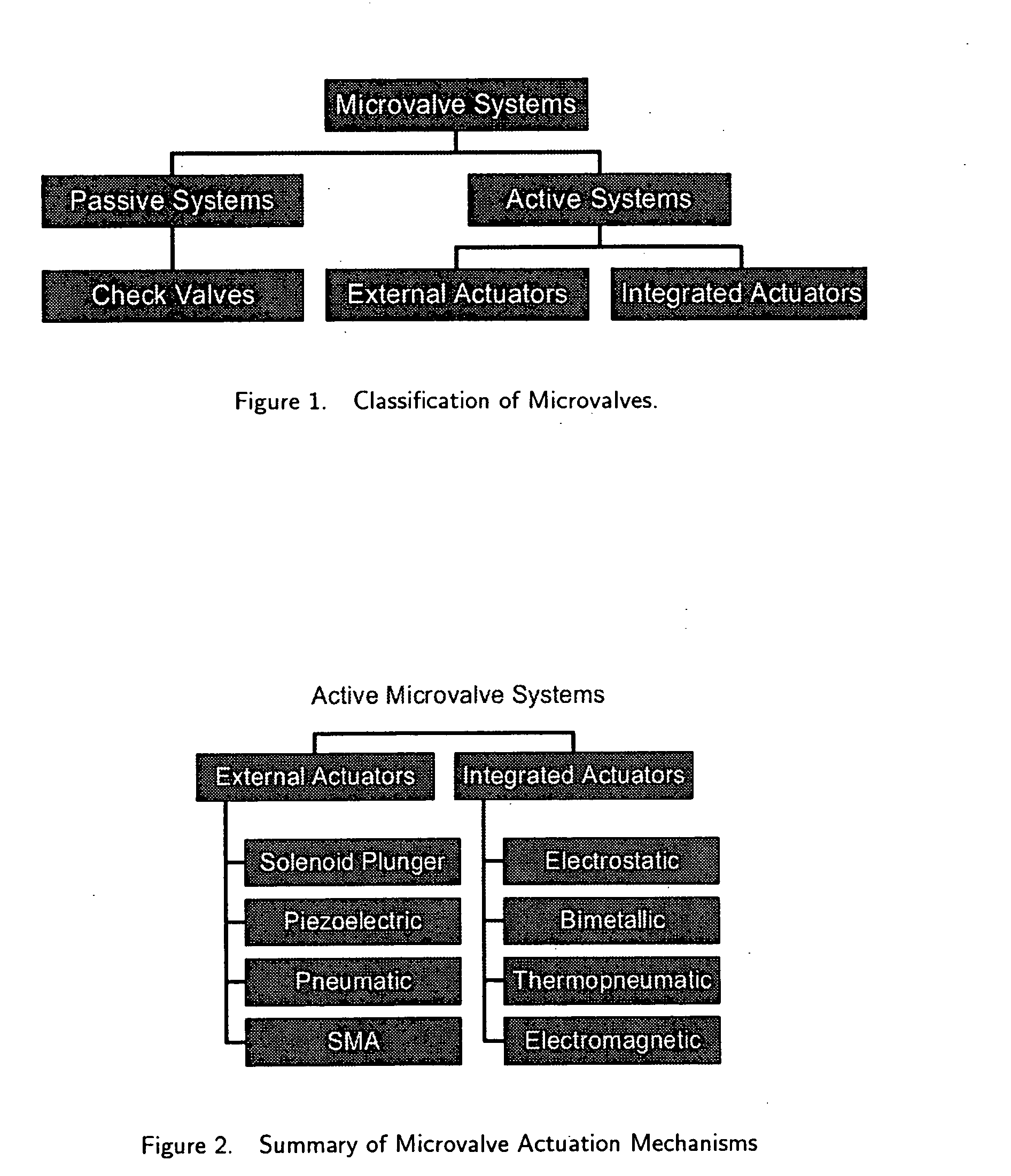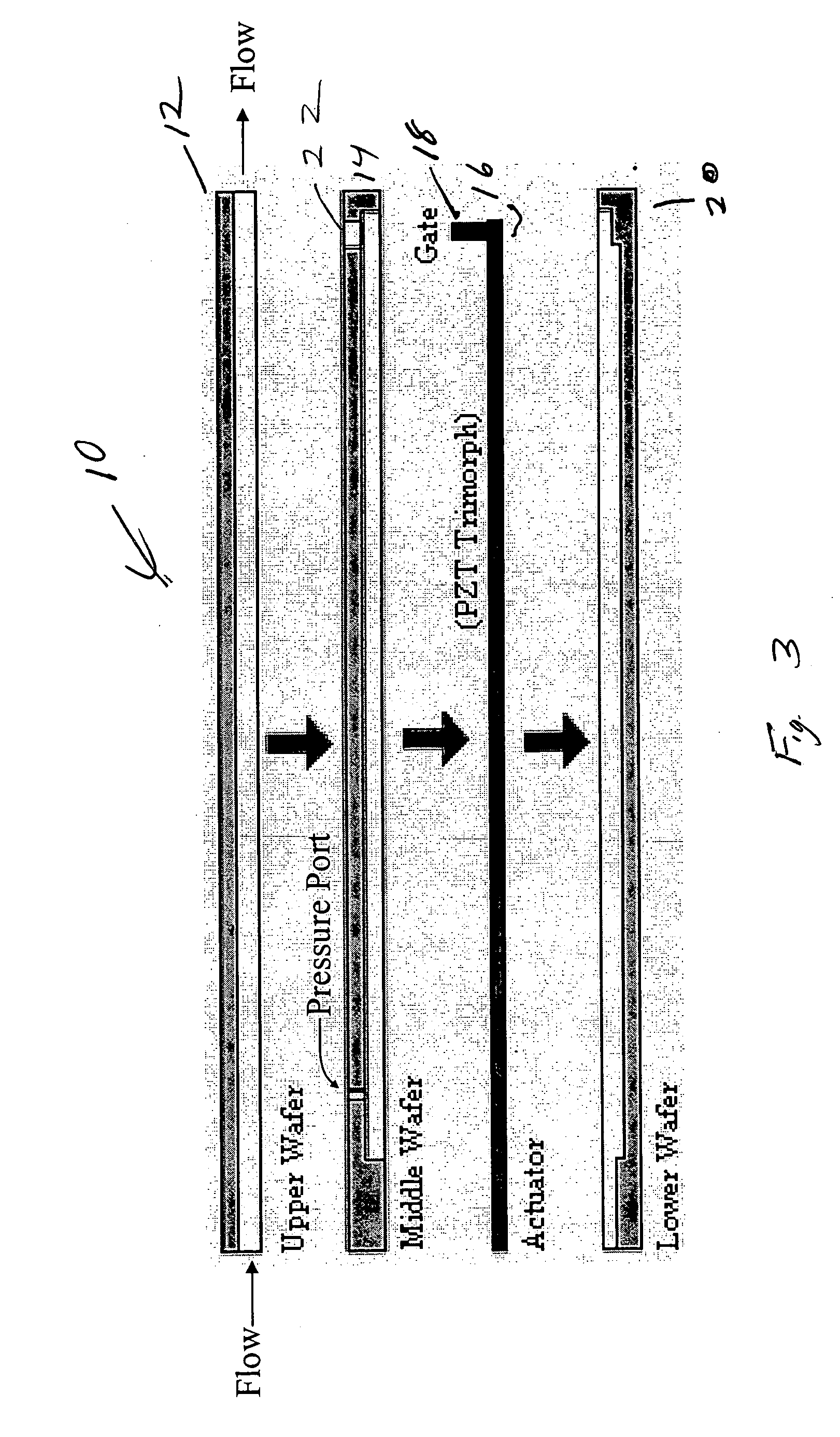Piezoelectric axial flow microvalve
a micro-valve and axial flow technology, applied in the field of micro-valve, can solve the problems of poor fuel conversion efficiency, reduced cell voltage, and reduced fuel cell li
- Summary
- Abstract
- Description
- Claims
- Application Information
AI Technical Summary
Benefits of technology
Problems solved by technology
Method used
Image
Examples
Embodiment Construction
(s)
[0061] The microvalve of this invention is shown generally in FIG. 3 at 10 in spaced apart fashion. FIG. 3b illustrates the microvalve as an assembled unit. The microvalve comprises and upper member part 12, a middle member part 14, an actuator 16 and a lower member part 20. Flow is generally from left to right through the microvalve. At the heart of the valve is a piezoelectric trimorph actuator 16 that is used to open and shut an axial flow valve via a valve gate 18. The valve gate can be formed from materials such as, but not limited to stainless steel or silicon Three wafers are fabricated out of silicon to create the flow channel and support the actuation mechanism. The middle member part 14 or wafer serves to shield the actuator 16 from the fluid pressure forces. The gate 18 moves through port 22. FIG. 3b shows a dimensioned drawing of the side view of an assembled microvalve. Note that the piezoelectric actuator 16 mechanism extends past the valve body on the left hand sid...
PUM
 Login to View More
Login to View More Abstract
Description
Claims
Application Information
 Login to View More
Login to View More - R&D
- Intellectual Property
- Life Sciences
- Materials
- Tech Scout
- Unparalleled Data Quality
- Higher Quality Content
- 60% Fewer Hallucinations
Browse by: Latest US Patents, China's latest patents, Technical Efficacy Thesaurus, Application Domain, Technology Topic, Popular Technical Reports.
© 2025 PatSnap. All rights reserved.Legal|Privacy policy|Modern Slavery Act Transparency Statement|Sitemap|About US| Contact US: help@patsnap.com



